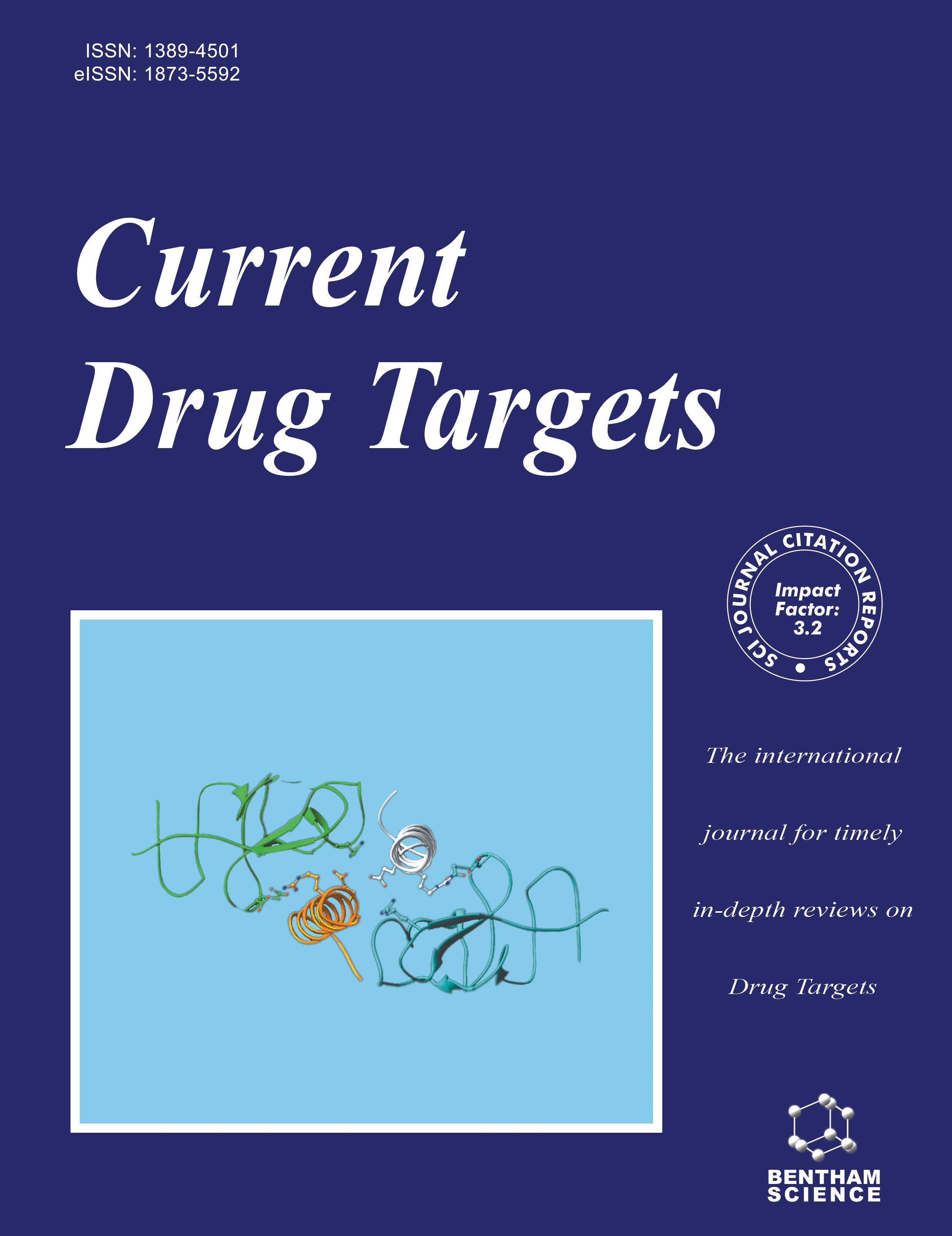- Home
- A-Z Publications
- Current Drug Targets
- Previous Issues
- Volume 24, Issue 3, 2023
Current Drug Targets - Volume 24, Issue 3, 2023
Volume 24, Issue 3, 2023
-
-
Epileptic Targets and Drugs: A Mini-Review
More LessBackground: Epilepsy is a neurological disease affected by an imbalance of inhibitory and excitatory signaling in the brain. Introduction: In this disease, the targets are active in pathophysiology and thus can be used as a focus for pharmacological treatment. Methods: Several studies demonstrated the antiepileptic effect of drugs acting on the following targets: N-methyl-D-aspartate (NMDA), alpha-amino-3-hydroxy-5- Read More
-
-
-
A Review on Recent Development of Novel Heterocycles as Acetylcholinesterase Inhibitor for the Treatment of Alzheimer’s Disease
More LessAuthors: Ashish Patel, Drashti Shah, Yug Patel, Stuti Patel, Meshwa Mehta and Tushar BambharoliyaAlzheimer's Disease (AD), affecting a large population worldwide, is characterized by the old population's loss of memory and learning ability. Cholinergic deficiency is associated with AD, and various cholinesterase inhibitors have been developed to treat AD, including naturallyderived inhibitors, synthetic analogs, and hybrids. Acetylcholinesterase (AChE) has obtained a renewed interest as a therapeutic target in Alzhei Read More
-
-
-
Potential Targets in Constipation Research: A Review
More LessAuthors: Priya Bisht, Neha Dagar, Nitesh Kumar, Ravichandiran Velayutham and Somasundaram ArumugamBackground: Constipation is one of the most frequent abnormalities of the gastrointestinal system that affects the patient’s quality of life. Constipation is more common in women and affects them more frequently as they get older. Many constipated patients take over-the-counter drugs for treatment, but some do not respond to these medicines and need newer, more expensive drugs. Still, many patients are not c Read More
-
-
-
Emerging Trends and Future Challenges of Nanovaccine Delivery via Nasal Route
More LessAuthors: Hitesh K. Dewangan, Akash Raghuvanshi and Kamal ShahThe mucosal surfaces are the key site of the entrance, protection, and stability of several pathogens. Considering that >90% of pathogens gain access to the body via mucosal sites, using mucosal vaccination to generate protective immunity at mucosal sites could overcome. Some of the micro and nano carrier-based nasal delivery systems produce cellular, humoral and mucosal immunity. The nasal route vaccination may Read More
-
-
-
A Scoping New Revolution for Tinnitus Management: A Neuromonics Narrative Review
More LessAuthors: Jitendra Gupta and Reena GuptaWith a prevalence ranging from 16-21%, tinnitus is an irking neurological disorder, manifesting as the perception of a roar of cacophony without an external acoustic stimulus. Although tinnitus is a non-life-threatening symptom, tinnitus's negative repercussions, such as personality disturbances and social withdrawal, are daunting concerns despite a gamut of conventional and emerging treatment options. Tinnitus management is Read More
-
-
-
Intra-articular Treatment with Triamcinolone Hexacetonide Associated with Gold Nanoparticles Reduces Cartilage Degeneration in an Animal Model of Osteoarthritis
More LessAuthors: Daniela P. dos Santos Haupenthal, Marcus Barg Resmini, Leandro Almeida Da Silva, Mateus Cardoso Colares, Laura de Roch Casagrande, Ligia Milanez Venturini, Thiago Antônio Moretti de Andrade, Fernando R. C. do Bomfim, Anand Thirupathi, Paulo Emilio Feuser, Felipe Dal Pizzol and Paulo Cesar Lock SilveiraIntroduction: The association between triamcinolone hexacetonide (TH) and gold nanoparticles (GNPs) represents a promising treatment due to the potential anti-inflammatory and antioxidant effects of these compounds. In this study, we evaluated the effects of intra-articular treatment of TH associated with GNPs in a mechanical model of osteoarthritis (OA). Methods: Fifty Wistar rats were divided into five groups: Sham; OA; O Read More
-
Volumes & issues
-
Volume 26 (2025)
-
Volume 25 (2024)
-
Volume 24 (2023)
-
Volume 23 (2022)
-
Volume 22 (2021)
-
Volume 21 (2020)
-
Volume 20 (2019)
-
Volume 19 (2018)
-
Volume 18 (2017)
-
Volume 17 (2016)
-
Volume 16 (2015)
-
Volume 15 (2014)
-
Volume 14 (2013)
-
Volume 13 (2012)
-
Volume 12 (2011)
-
Volume 11 (2010)
-
Volume 10 (2009)
-
Volume 9 (2008)
-
Volume 8 (2007)
-
Volume 7 (2006)
-
Volume 6 (2005)
-
Volume 5 (2004)
-
Volume 4 (2003)
-
Volume 3 (2002)
-
Volume 2 (2001)
-
Volume 1 (2000)
Most Read This Month
Article
content/journals/cdt
Journal
10
5
false
en


